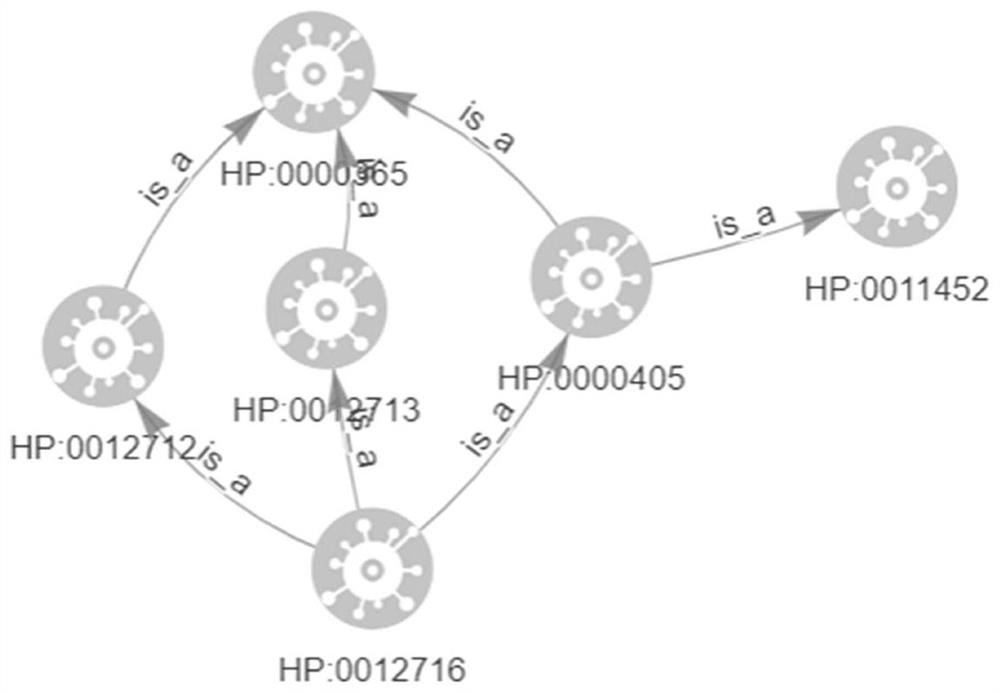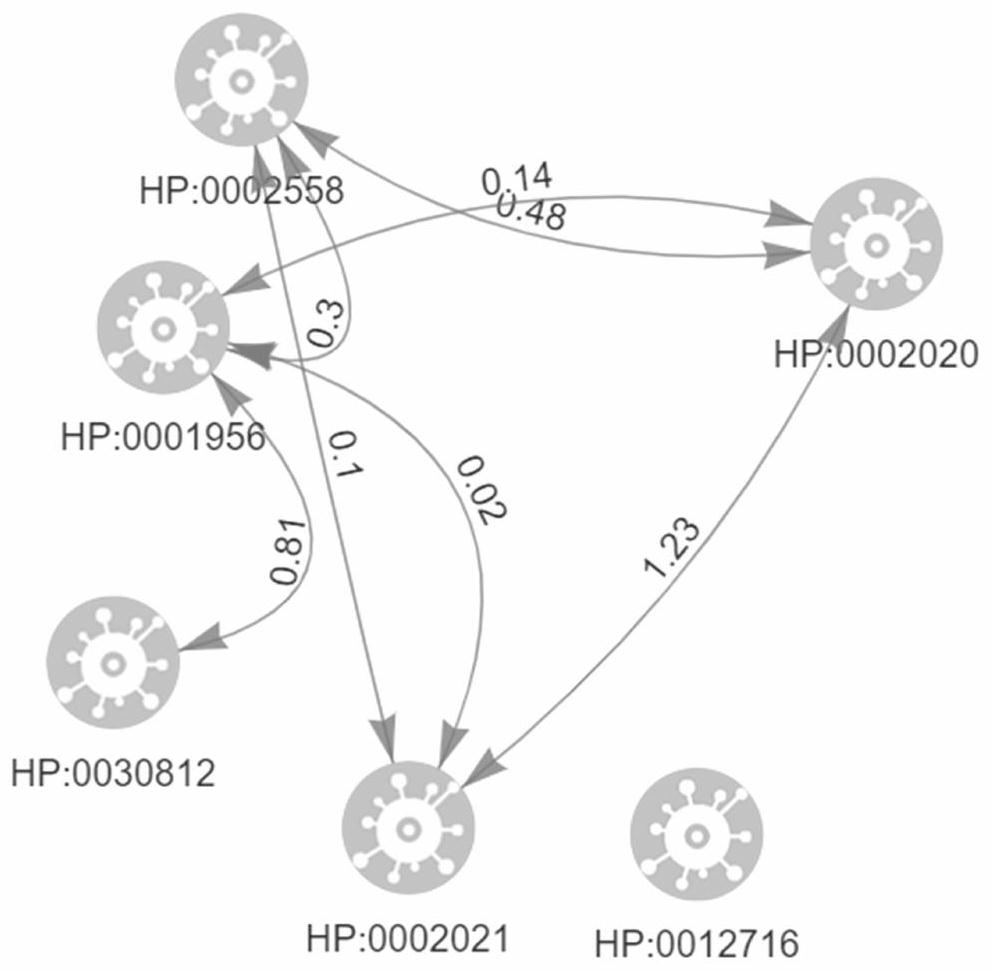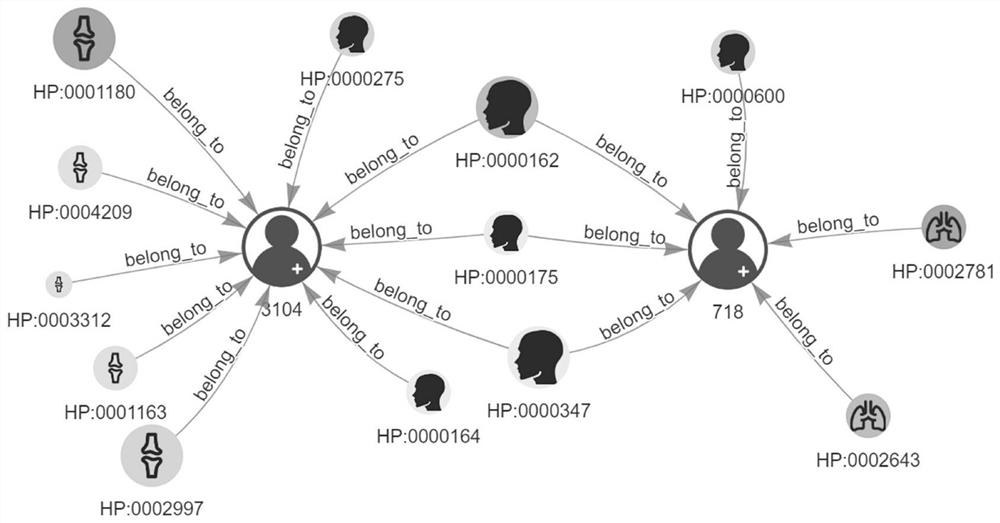Rare disease auxiliary reasoning method and system based on phenotype visualization
A rare disease and phenotype technology, applied in the field of rare disease auxiliary reasoning based on phenotype visualization, can solve the problems of poor phenotype diagnosis of rare diseases, inaccurate and incomplete collection of patient phenotypes, etc., and achieve flexible disease recommendation Effect
- Summary
- Abstract
- Description
- Claims
- Application Information
AI Technical Summary
Problems solved by technology
Method used
Image
Examples
Embodiment Construction
[0056] The present invention will be further described in detail below with reference to the accompanying drawings and embodiments. It should be noted that the following embodiments are intended to facilitate the understanding of the present invention, but do not limit it in any way.
[0057] The present invention utilizes the human phenotype ontology with a hierarchical structure and the associated annotations of rare diseases and clinical phenotypes provided in the Orphanet knowledge base to construct a phenotype semantic hierarchical network, phenotype co-occurrence relationship network and rare disease phenotypes through visualization technology The feature network uses the phenotype semantic hierarchical network and the phenotype co-occurrence relationship network to optimize patient phenotype information, and uses the rare disease phenotype feature network to achieve visual comparative analysis of disease phenotype features. Finally, a phenotype-based auxiliary reasoning ...
PUM
 Login to View More
Login to View More Abstract
Description
Claims
Application Information
 Login to View More
Login to View More - R&D
- Intellectual Property
- Life Sciences
- Materials
- Tech Scout
- Unparalleled Data Quality
- Higher Quality Content
- 60% Fewer Hallucinations
Browse by: Latest US Patents, China's latest patents, Technical Efficacy Thesaurus, Application Domain, Technology Topic, Popular Technical Reports.
© 2025 PatSnap. All rights reserved.Legal|Privacy policy|Modern Slavery Act Transparency Statement|Sitemap|About US| Contact US: help@patsnap.com



